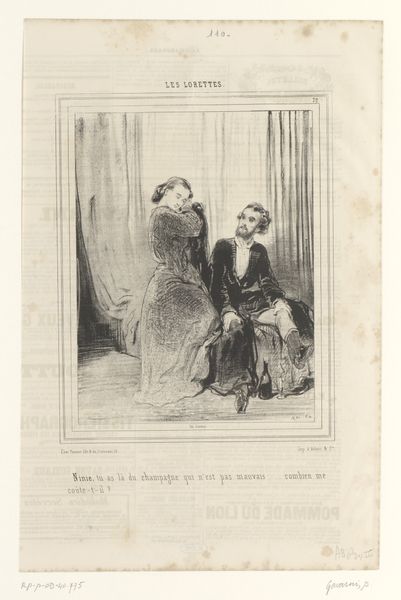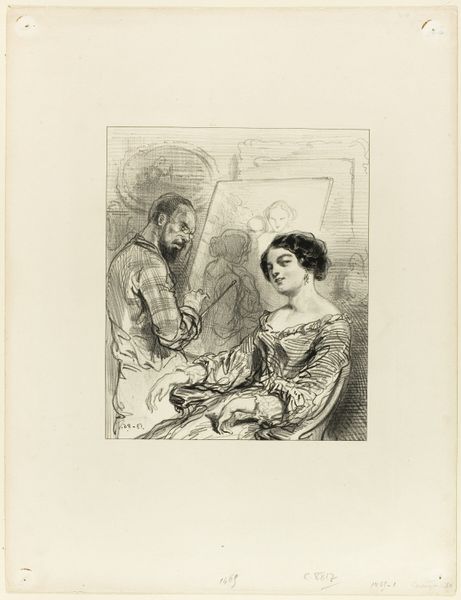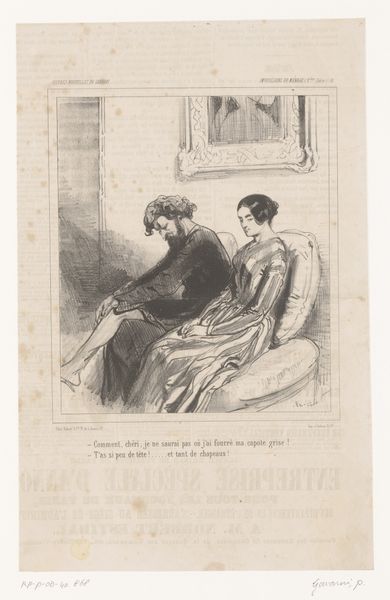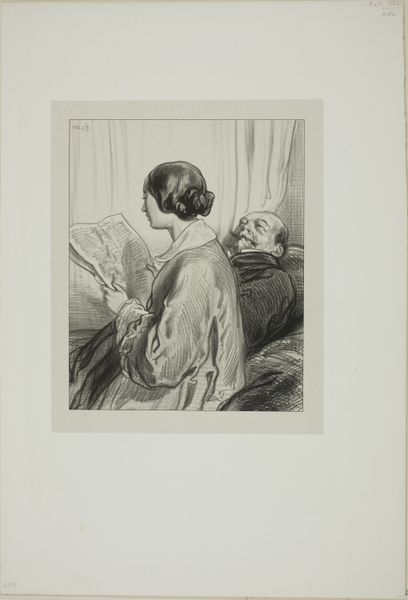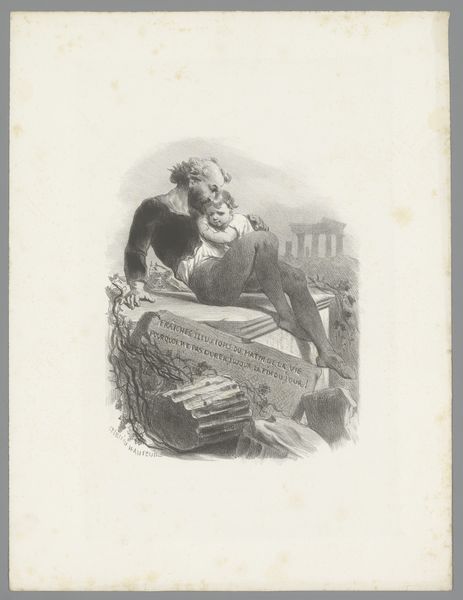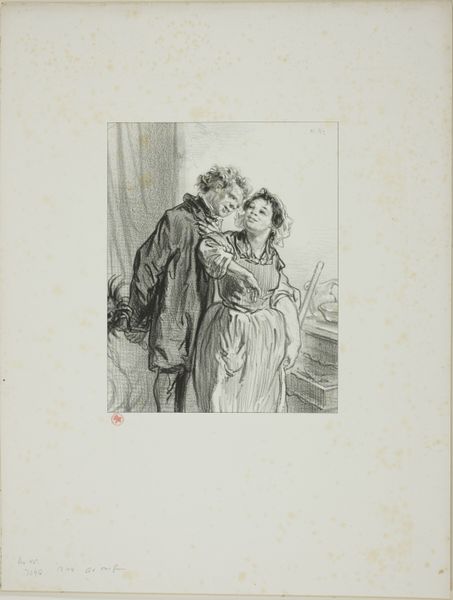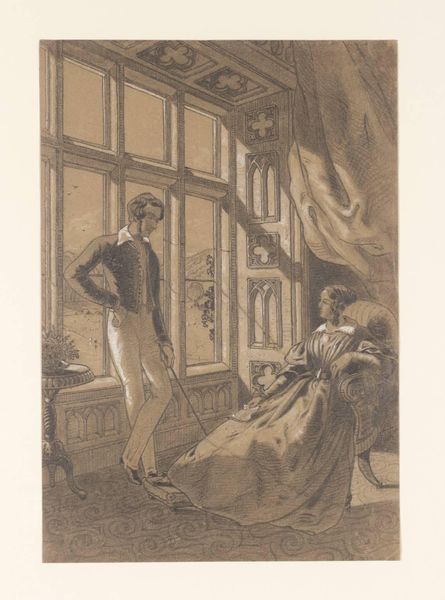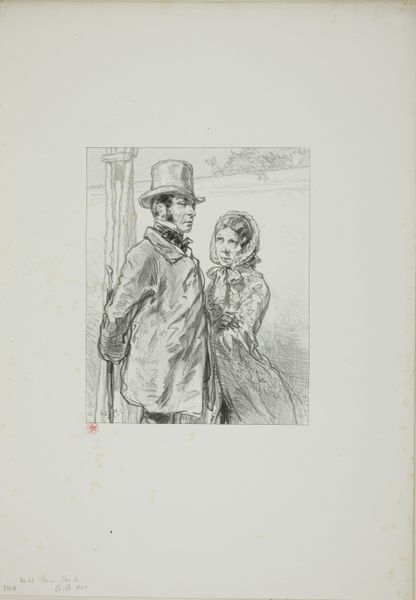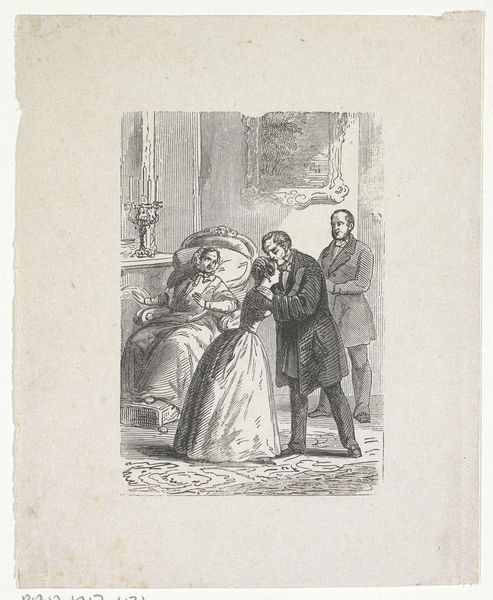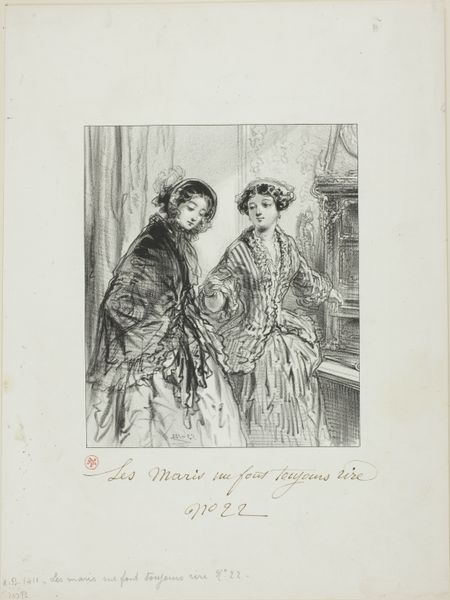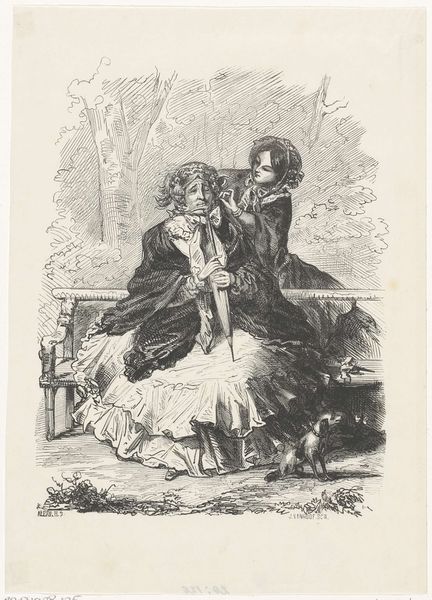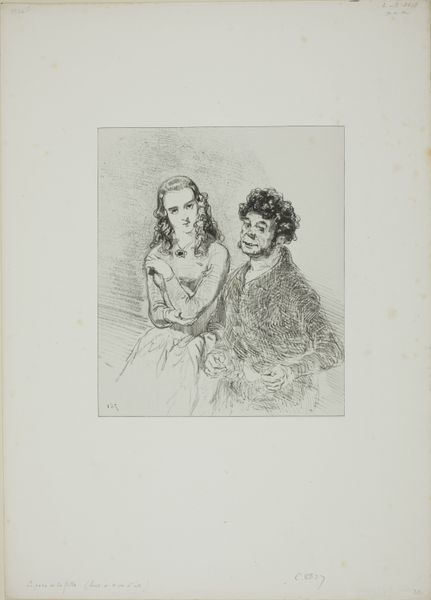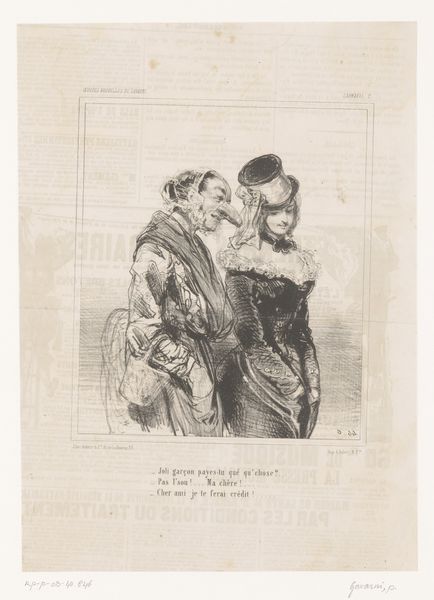
Copyright: Public domain
Curator: Gavarni's "Husbands Always Make Me Laugh: Come, Mme. Rabat-joie, shut up" from 1853 presents a stark depiction of marital discord. The lithograph utilizes graphite and pencil on toned paper, resulting in an image that feels both intimate and distant. What's your initial reaction? Editor: Well, immediately, the man's pose – utterly limp and self-satisfied – combined with the woman’s averted gaze suggests a palpable tension. It’s visually unbalanced, with her upright stance countering his relaxed sprawl, but also formally well structured. The graphite seems applied with careful layering to achieve distinct tonalities and depth, too. Curator: The tilted axis of the male figure, in contrast with the straight posture of the female body reflects an uneven distribution of power within the depicted bourgeois family unit. The wife turns away, not merely as an act of disgust, but a commentary on how her agency is constantly dismissed in favor of patriarchal needs. Editor: Perhaps, but that reading hinges on assigning specific intent. Could it simply be exploring opposing vectors within a shared space? The light falls distinctly on his face and shoulders, drawing us to the textures created by Gavarni’s confident and subtle pencil strokes defining his facial features. I cannot help but think about realism in this picture as the tonality accentuates light reflecting the period, but also on Gavarni’s craft to get those fine details from his subject, especially on the folds and textures of clothing that highlight each characters body language Curator: Certainly, we must also analyze Gavarni's broader societal critiques to inform this perspective, as the artwork engages within a long lineage of graphic satire. How can we disentangle our contemporary interpretations, specifically of gendered violence, from Gavarni’s era? His drawings offer a complex tableau that calls into question the gender stereotypes while reinforcing societal attitudes around labor division and propriety of woman in a household that are visible also in Honoré Daumier. Editor: To step away from this debate, looking just at its form, I see how this toned paper functions less as a support, and more as active medium creating midtones that are key for defining the image volume overall Curator: That's interesting because understanding materiality becomes important, I'd argue, for accessing not just the immediate artistic intention, but also the cultural understanding of women. In effect, women's material role was crucial to maintaining respectability in middle-class families while men worked and, perhaps as in the lithograph, relaxed at home after work Editor: I'm struck, by the interplay of detail and caricature throughout the lithograph. In detail there’s the furniture in the drawing and caricature within how character body gestures amplify the social drama from a common couple that feel timeless Curator: So, our conversation brings forward the intricate tension in how the formal decisions amplify a message about this scene, from an intimate, albeit caricatured social interaction, from the nineteenth century. Editor: A moment that's well designed by the artwork formal strategies which, from my perspective, transcends its temporal-cultural niche.
Comments
No comments
Be the first to comment and join the conversation on the ultimate creative platform.
